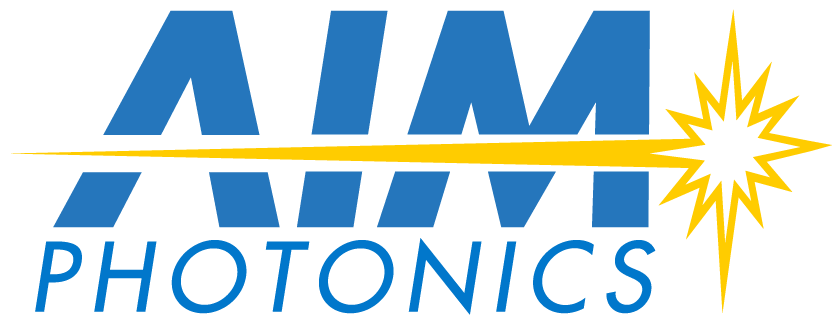AIM Photonics Delivers HOPE Kits to Support Integrated Photonics Instruction
Hands-on kits provide educators and students with essential experience in PIC testing
AIM Photonics announced today that distribution is underway for its Hands-On Photonics Education Kit (HOPE Kit)—a set of integrated photonics chips designed to help students at U.S. colleges and universities gain practical experience with photonic integrated circuits (PICs) through hands-on testing and characterization. While the kits have already been used in AIM Photonics’ PIC Test and Packaging Workshops, the first shipments to educational institutions are being sent to the Labs for Education and Application Prototypes (LEAPs) at Western New England University, MIT, and Bridgewater State University.
Dr. Robert Geer, director of Education and Workforce Development at AIM Photonics, and Dr. Anthony Aiello, Photonics and Test Engineer, discuss and demonstrate AIM Photonics’ HOPE Kit—an innovative educational tool that provides students with hands-on experience in testing photonic integrated circuits, helping to bridge the gap between classroom learning and real-world applications.
The goal of the HOPE Kit—developed by researchers at AIM Photonics, MIT, Rochester Institute of Technology (RIT), University of Rochester, Bridgewater State University and Spark Photonics —is to help foster the development of a highly skilled integrated photonics workforce in the U.S. by flattening the learning curve and removing barriers related to PIC testing for those institutions and students who may not own or have access to a state-of-the art test facility.
“Our objective was to develop a model that universities and community colleges can easily incorporate into their programs without the expense and challenges associated with bare-PIC alignment setups,” said Stefan Preble, professor in the Kate Gleason College of Engineering at RIT and project lead for the HOPE Kit initiative.
Unlike bare-PIC testing that relies on highly specialized equipment to test individual devices on a chip, the HOPE Kit includes six integrated photonic chips manufactured by AIM Photonics in Albany, NY and packaged by AIM Photonics’ TAP facility in Rochester, NY. These chips can be analyzed individually or as an entire system in an application-ready format.
“The HOPE Kit gives students the experience of testing functional PICs, which will aid in their understanding of key PIC theoretical concepts. It starts with the most basic measurements of PICs such as insertion loss and interference and builds up to advanced testing of leading-edge datacom PIC devices including modulators, photodetectors and filters, and finally culminates with wavelength division multiplexing and de-multiplexing of circuits,” Preble said.
Focused primarily on the fundamental concepts used in data communications, AIM Photonics HOPE Kits are designed to test:
Insertion loss (propagation and bend loss)
Interference (directional couplers and Mach-Zehnder Interferometers)
Mach-Zehnder modulation (thermo-optic and silicon electro-optic)
Germanium photodetectors
Ring resonators for wavelength division multiplexing and de-multiplexing.
\WDM micro-ring modulation
Each kit also includes an instructor’s guide with layout and testing steps to help students and instructors follow a structured process and visualize what they are testing.
“This helps them gain a deeper understanding of fundamental PIC components, analyze data effectively, and develop reliable testing procedures for the PICs they may design in the future,” said Jaime Cardenas, associate professor at the Institute of Optics at the University of Rochester and collaborator on the HOPE Kit.
“Mastering these skills is essential because a strong grasp of PIC functionality and the ability to extract accurate performance data are both critical for designing and manufacturing high-quality photonic integrated circuits,” Cardenas added.
The HOPE Kit provides instructors with a powerful, cost-effective tool to deliver more engaging and practical instruction in integrated photonics—an area that can sometimes be difficult to teach due to limited access to testing infrastructure.
“By allowing students to interact directly with packaged photonic integrated circuits, the kits bridge the gap between theory and application, giving them practical experience that strengthens their preparation for careers in this rapidly evolving field,” said Dr. Robert Geer, director of Education and Workforce Development at AIM Photonics.
Future plans for the HOPE Kits include the continued development of more advanced communication circuits, as well as kits based on sensing applications, quantum computing, and LiDAR technologies.
“With its broad capabilities, the HOPE Kit is unlike anything else available in the U.S.,” Geer added. “It’s the only tool of its kind that provides this depth of hands-on learning to both students and educators.”
For additional information, contact MarCom@aimphotonics
About AIM Photonics
The American Institute for Manufacturing Integrated Photonics (AIM Photonics) is one of nine Manufacturing Innovation Institutes established and managed by the U.S. Department of Defense to advance new technology and capabilities into products and systems that help secure national defense and economic priorities. Find out more at aimphotonics.com and on LinkedIn @AIM Photonics.
